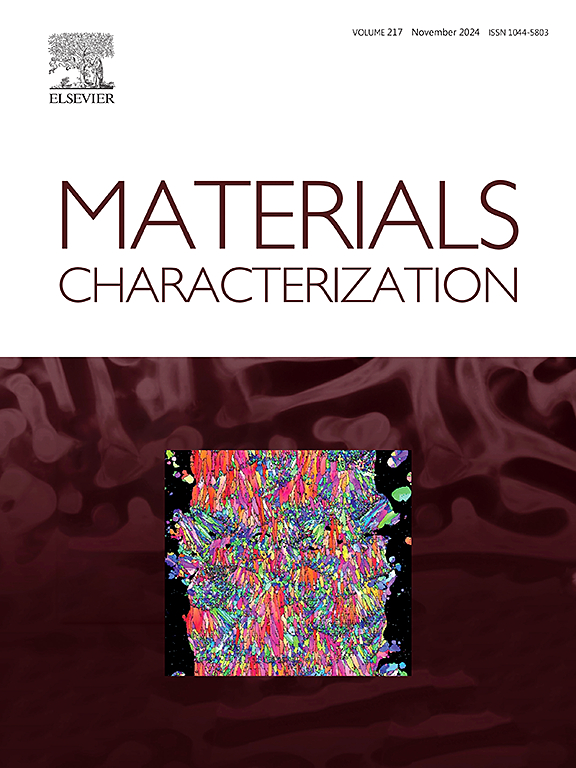Enhanced galvanizing properties in advanced high-strength steel by introducing higher aluminum contents in the zinc bath
IF 4.8
2区 材料科学
Q1 MATERIALS SCIENCE, CHARACTERIZATION & TESTING
引用次数: 0
Abstract
The optimum aluminum (Al) content in a zinc (Zn) bath was investigated to enhance galvanizing properties through a comparative study in three steel grades: interstitial free (IF), low silicon-containing (0.3Si/Mn, Si/Mn = 0.3), and high silicon-containing (1.0Si/Mn, Si/Mn = 1.0) steels. Wettability was evaluated based on wetting force and Fe2Al5-xZnx inhibition layer coverage. IF steel exhibited the best wettability at 0.25 wt% Al-containing Zn bath. However, higher Al concentrations led to the formation of coarse Fe2Al5-xZnx particles at the Zn/steel interface, reducing the wetting force. In contrast, 0.3Si/Mn and 1.0Si/Mn steels showed a steady increase in wetting force with higher Al contents. In Si- and Mn-containing steels (0.3Si/Mn and 1.0Si/Mn), surface oxides formed during annealing were reduced by the aluminothermic reaction during immersion, consuming Al at the Zn/steel interface. This Al consumption suppressed abnormal Fe2Al5-xZnx crystal growth, improving wettability at higher Al levels. Additionally, as Fe2Al5-xZnx grew, it trapped residual oxides, further enhancing wettability. However, 1.0Si/Mn steel exhibited lower wettability due to a continuous oxide film that suppressed Fe dissolution, making Fe2Al5-xZnx formation more difficult. These findings provide valuable insights for optimizing Al content in the Zn bath to improve the wettability of advanced high-strength steels.

通过在锌浴中引入更高的铝含量来提高高级高强度钢的镀锌性能
通过对无间隙钢(IF)、低含硅钢(0.3Si/Mn, Si/Mn = 0.3)和高含硅钢(1.0Si/Mn, Si/Mn = 1.0)三种钢种的对比研究,探讨了锌(Zn)镀液中铝(Al)的最佳含量以提高镀锌性能。通过润湿力和Fe2Al5-xZnx抑制层覆盖率评价润湿性。在含铝量为0.25 wt%的锌浴中,IF钢的润湿性最好。然而,较高的Al浓度导致在Zn/钢界面处形成较粗的Fe2Al5-xZnx颗粒,降低了润湿力。而随着Al含量的增加,0.3Si/Mn和1.0Si/Mn钢的润湿力逐渐增大。在含Si和含Mn钢(0.3Si/Mn和1.0Si/Mn)中,退火过程中形成的表面氧化物在浸泡过程中通过铝热反应被还原,在Zn/钢界面处消耗Al。这种Al消耗抑制了Fe2Al5-xZnx晶体的异常生长,提高了高Al水平下的润湿性。此外,随着Fe2Al5-xZnx的生长,它会捕获残余的氧化物,进一步提高润湿性。然而,1.0Si/Mn钢表现出较低的润湿性,这是由于连续的氧化膜抑制了铁的溶解,使Fe2Al5-xZnx更难形成。这些发现为优化锌浴中的Al含量以提高高级高强度钢的润湿性提供了有价值的见解。
本文章由计算机程序翻译,如有差异,请以英文原文为准。
求助全文
约1分钟内获得全文
求助全文
来源期刊

Materials Characterization
工程技术-材料科学:表征与测试
CiteScore
7.60
自引率
8.50%
发文量
746
审稿时长
36 days
期刊介绍:
Materials Characterization features original articles and state-of-the-art reviews on theoretical and practical aspects of the structure and behaviour of materials.
The Journal focuses on all characterization techniques, including all forms of microscopy (light, electron, acoustic, etc.,) and analysis (especially microanalysis and surface analytical techniques). Developments in both this wide range of techniques and their application to the quantification of the microstructure of materials are essential facets of the Journal.
The Journal provides the Materials Scientist/Engineer with up-to-date information on many types of materials with an underlying theme of explaining the behavior of materials using novel approaches. Materials covered by the journal include:
Metals & Alloys
Ceramics
Nanomaterials
Biomedical materials
Optical materials
Composites
Natural Materials.
 求助内容:
求助内容: 应助结果提醒方式:
应助结果提醒方式:


